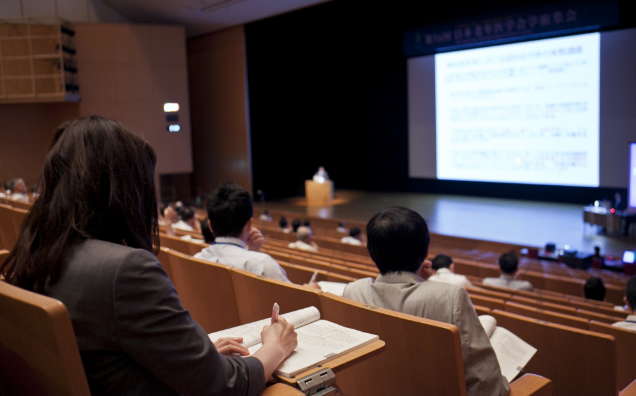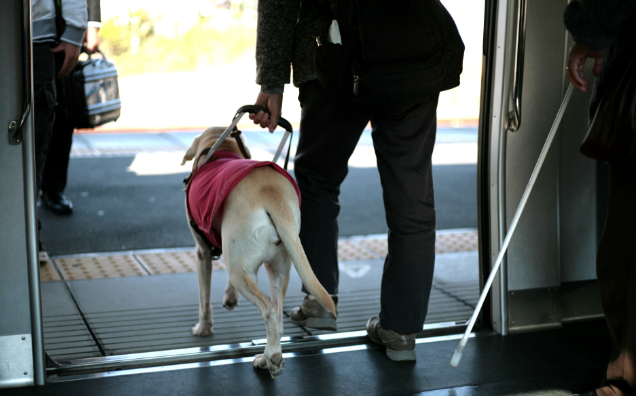- TOP >
- Initiatives of the Ikeda Teruko Memorial Tactile Museum, affiliated with the Japan Braille Library
Initiatives of the Ikeda Teruko Memorial Tactile Museum, affiliated with the Japan Braille Library 2F I-Bright, 2-3-14 Takadanobaba, Shinjuku-ku, Tokyo
Touching is Believing
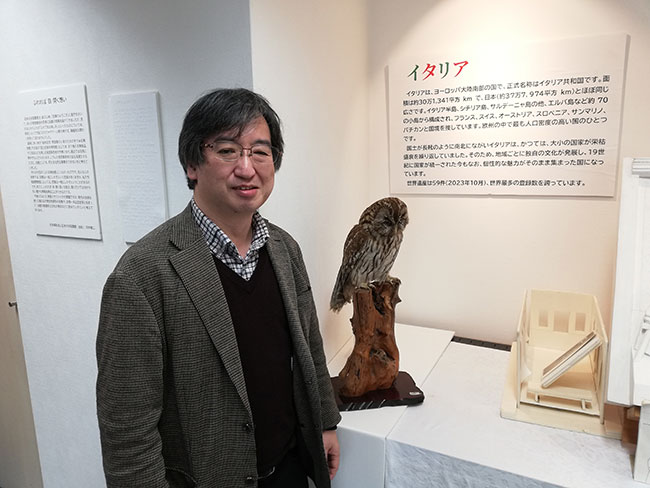 Akira Watanabe, director of “The Tactile Museum”, Japan Braille Library
Akira Watanabe, director of “The Tactile Museum”, Japan Braille Library
“The Tactile Museum” is located a 10-minute walk from Takadanobaba Station, in the direction of Waseda University. The route to the exhibition room on the second floor is equipped with tactile paving blocks and an elevator with voice guidance and Braille signage that allows visitors with visual impairments to ride it with peace of mind. The interior, located in a corner of an apartment building, is compact so that people with visual impairments can move around without difficulty. Unlike conventional art museums and museums, rather than having to stand while viewing, an exhibition space has been created where visitors can sit in chairs and “touch” the exhibits, which are placed on tables. Visits are by appointment only, and the museum is open from 10:00 AM to 4:00 PM on Wednesdays, Fridays, and Saturdays.
They say that seeing is believing, but for those with visual impairments, we have a saying, "touching is believing." The words are attributed to the late Mr. Masataro Sakurai. He himself was visually impaired and turned his home in Morioka City, Iwate Prefecture into a tactile museum (now the Sakurai Memorial Seeing with Hands Museum for the Visually Impaired). The saying means that even if it does not provide the certainty of visual information, tactile information (obtained through touch) provides clarity and understanding much like "seeing is believing." “The Tactile Museum"'s aim is to enhance the education of people with visual impairments by providing tactile information and contribute to the improvement of welfare for people with visual impairments. The museum was made possible by a facility provided by Ms. Teruko Ikeda, a philanthropist living in Takadanobaba, and officially opened in April 2018 as an affiliated museum of the Japan Braille Library.
We spoke with Mr. Akira Watanabe, who is the director of “The Tactile Museum” at the Japan Braille Library, about the museum's efforts to provide extensive tactile information not only to people with visual impairments but also to those without disabilities, so that everyone can enjoy the museum.
 Akira Watanabe, director of “The Tactile Museum”, Japan Braille Library
Akira Watanabe, director of “The Tactile Museum”, Japan Braille Library
Permanent display of a relief of Leonardo da Vinci's mural "The Last Supper"
 Relief of "The Last Supper"
Relief of "The Last Supper"
“The Tactile Museum” consists of a permanent exhibition, special exhibitions, and preservation of daily living tools for the visually impaired. The permanent exhibition displays a semi-relief of Leonardo da Vinci's mural "The Last Supper" (from the collection of Mr. Susumu Ouchi, honorary member of the National Institute of Special Needs Education). This relief is a spatial model made of plaster by the Anteros Tactile Museum in Italy, and it allows visitors to understand the composition of the work, the perspective of the painting, etc. through touch. People without visual impairments can also appreciate the three-dimensionality of the work by touching it, in addition to enjoying it visually.
 Relief of "The Last Supper"
Relief of "The Last Supper"
Two special exhibitions are held each year with the cooperation of related organizations and companies that match the content of the exhibition
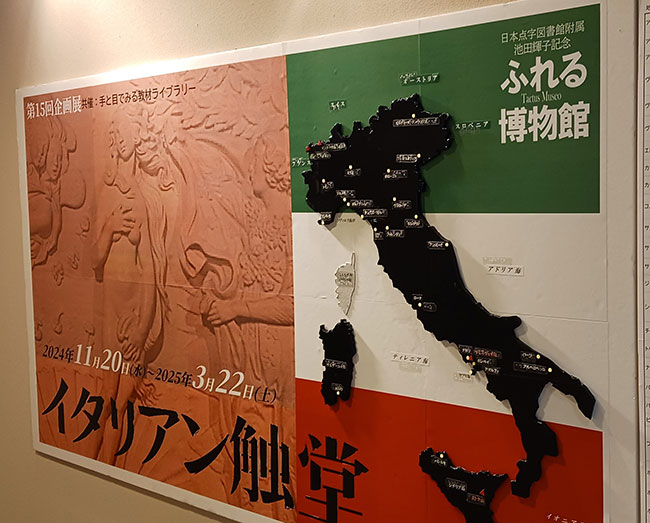 The 15th special exhibition, "Italian Tactile Hall"
The 15th special exhibition, "Italian Tactile Hall"
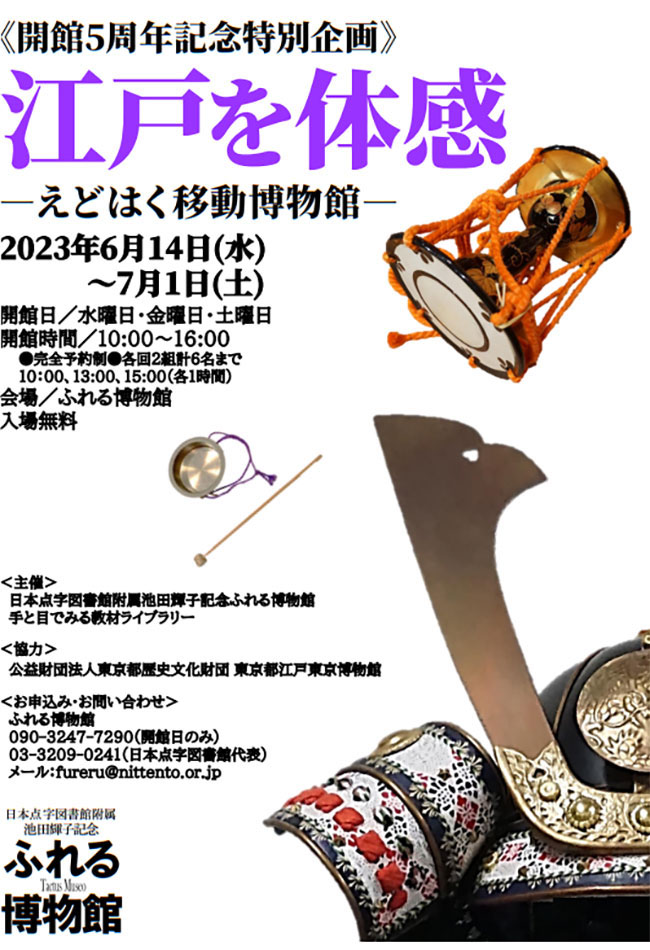 "Experiencing Edo" a special project to commemorate the 5th anniversary of the museum's opening
"Experiencing Edo" a special project to commemorate the 5th anniversary of the museum's opening
Special exhibitions are held twice a year with different themes, starting with the pre-opening exhibition "Castles of Japan" from November 10, 2017. Most recently, the 15th special exhibition, "Italian Tactile Hall," with the theme of Italy, was held from November 20, 2024 to March 22, 2025. The tactile exhibits are held with the cooperation of Susumu Ouchi's collection and related organizations and companies whose contents match the theme of the exhibition. For example, for the 11th Special Exhibition, "Feeling Stones," which was held from November 16, 2022, the Kiseki Museum of World Stones in Fujinomiya City, Shizuoka Prefecture, gave us their full cooperation, allowing visitors to enjoy touching the stones, and we borrowed and exhibited about 20 kinds of rare rocks that allow visitors to feel their texture, sound, weight, and smell.
In addition, with the cooperation of the Edo-Tokyo Museum, which was closed for major renovations, we held a special exhibition commemorating the 5th anniversary of the museum's opening, "Experiencing Edo," from June 14, 2023, as part of the "Mobile Edo-Tokyo Museum." As a special project to experience the history and culture of Edo, we held exhibitions and workshops, including reproduction wooden printing blocks of Ukiyo-e, tactile drawings represented in Braille and raised features that can be understood by touch, replicas of armor, and musical instruments from the Kabuki stage.
In the workshop, we borrowed a device for creating the sound effects of rain used in Kabuki plays, and participants experienced Kabuki musical instruments. Through the cooperation of various parties, we exhibit such items that visitors can enjoy through touch and sound. If there are objects created by museums and art galleries for their special exhibitions, we hope we can continue to reuse them for exhibits in the future.
 The 15th special exhibition, "Italian Tactile Hall"
The 15th special exhibition, "Italian Tactile Hall"
 "Experiencing Edo" a special project to commemorate the 5th anniversary of the museum's opening
"Experiencing Edo" a special project to commemorate the 5th anniversary of the museum's opening
Ingenious explanations and handmade exhibits double the fun of touching
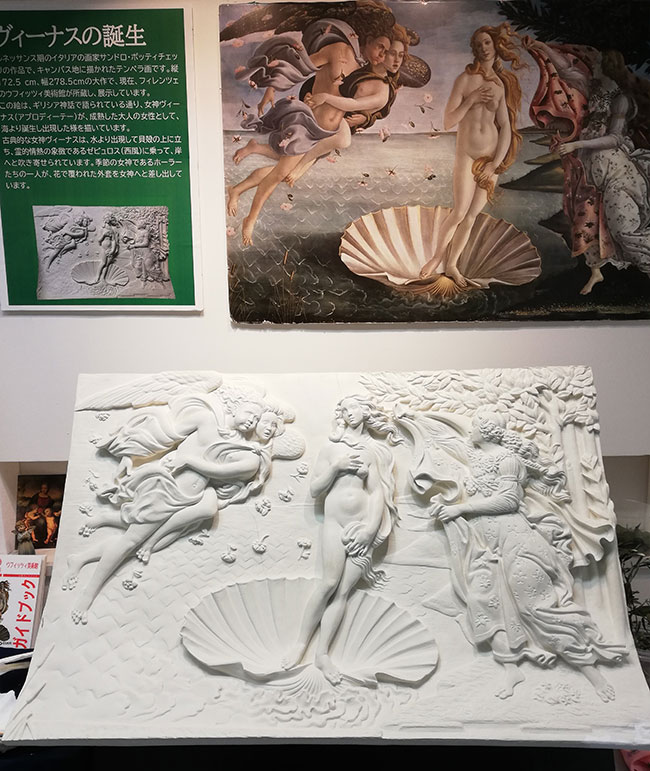 Relief of The Birth of Venus
Relief of The Birth of Venus
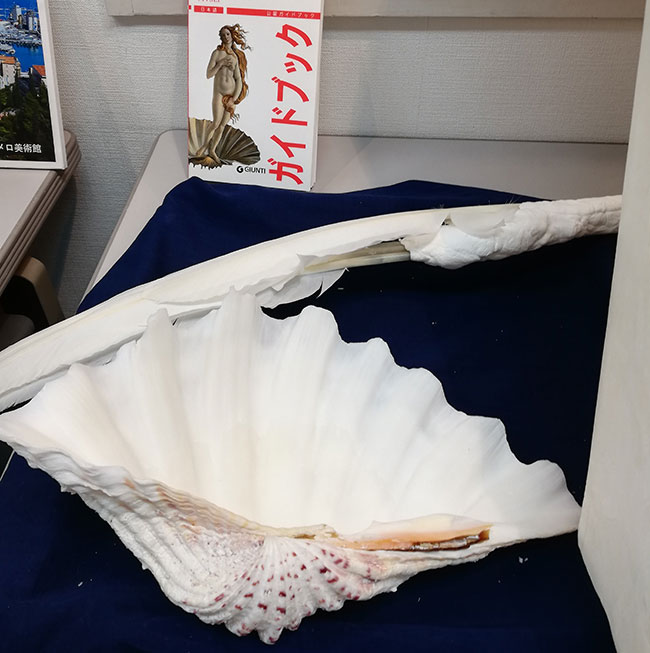 Seashell and angel wings of The Birth of Venus
Seashell and angel wings of The Birth of Venus
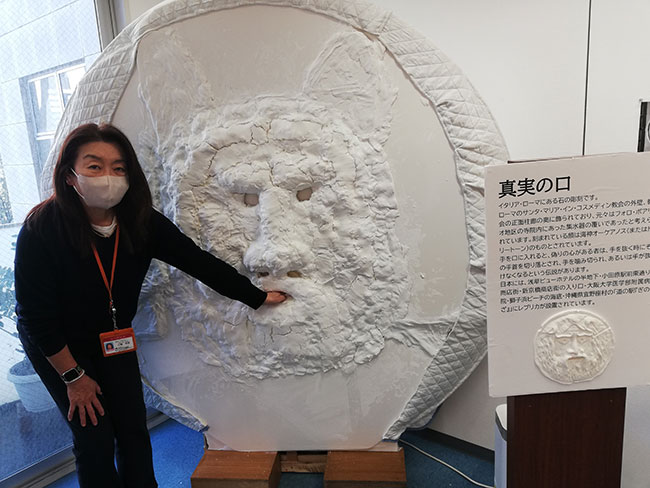 Handmade Mouth of Truth
Handmade Mouth of Truth
“The Tactile Museum” strives to hold clever and innovative exhibits for visitors. In the aforementioned "Italian Tactile Hall" exhibition, we placed a real seashell, feathers, cloth, and a small branch with leaves next to the relief of "The Birth of Venus" by Sandro Botticelli. For example, visitors can appreciate the texture of the angel's wings in the relief by touching the real feathers at the same time. Speaking of Italy, there is the famous scene in the movie "Roman Holiday" where the princess puts her hand in the Mouth of Truth.
We made a life-size replica of the Mouth of Truth out of paper clay and put it on display. When you put your hand in the Mouth of Truth, it dispenses hand sanitizer from the mouth.
This mechanism was inspired by an idea from the University of Osaka Hospital. In addition, since Italy is shaped like a boot, we placed a real boot next to the tactile map that allows visitors to understand it by touching it so that they can compare it with the actual topography of Italy through touch.
 Relief of The Birth of Venus
Relief of The Birth of Venus
 Seashell and angel wings of The Birth of Venus
Seashell and angel wings of The Birth of Venus
 Handmade Mouth of Truth
Handmade Mouth of Truth
Promoting exhibitions that everyone can enjoy
Exhibitions that can be enjoyed by touching need not be considered as something only for those with visual impairments. When people without visual impairments touch the exhibits, they can make new discoveries and gain new insights. We hope that, at regular museums and galleries too, if there are any tactile exhibits such as monuments or replicas related to their special exhibitions, a "corner where they can be enjoyed through touch" will be set up. By continually refining the ways in which visitors can interact through touch, a new dimension of enjoyment – tactile exploration – will be added to exhibitions, alongside traditional visual appreciation.
 social media accounts
social media accounts
Tokyo, a city that is accessible everywhere to anyone.
Sightseeing where you wish, as you wish.
This ability to travel anywhere you please makes life that much richer.
Tokyo welcomes your visit.
Here you can encounter tradition,
history, culture, nature, technology,
and, best of all, smiling faces.
Making tourism closer and more
enjoyable through accessible tourism.



